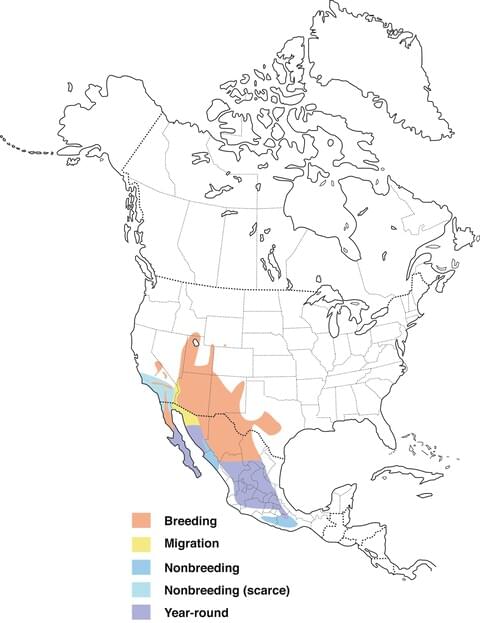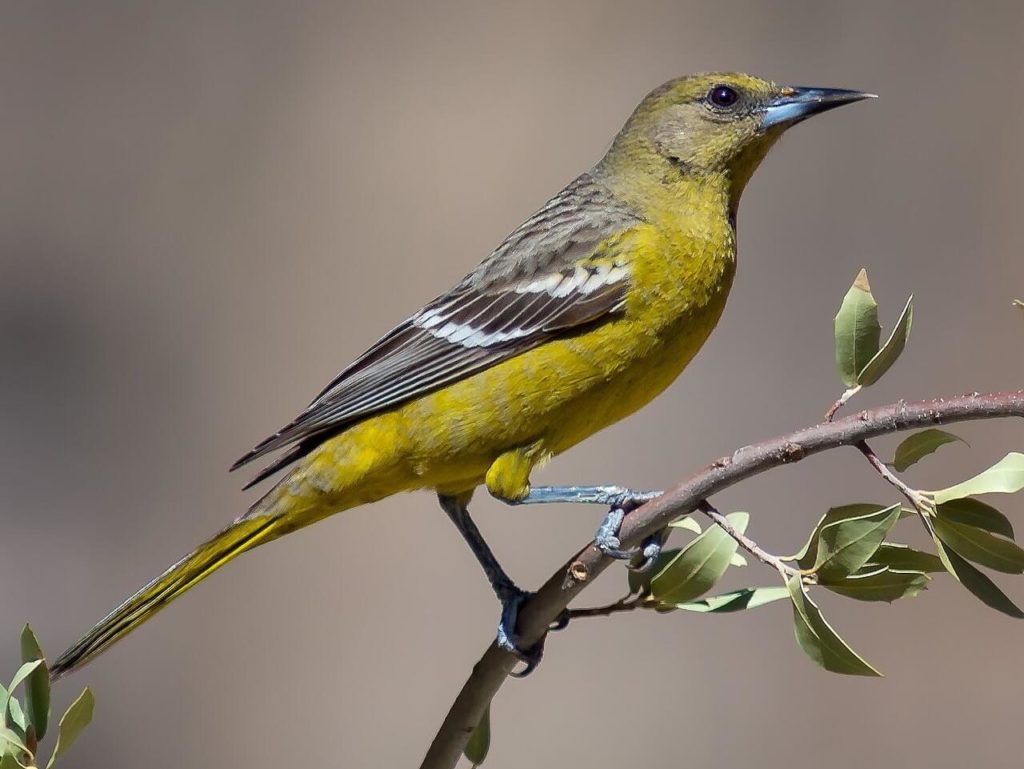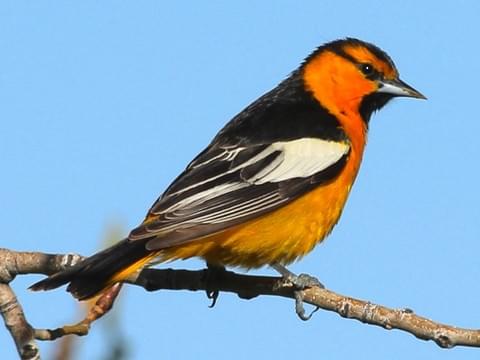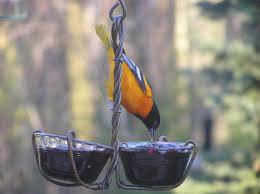by DJ Featherton

Everyone loves the Baltimore Oriole, and rightfully so. This beautiful bird has a distinctive resume. He’s the state bird of Maryland and has long carried the name of Maryland’s professional baseball team. He was actually given the name “Baltimore” Oriole in 1808 because of the male’s bright orange colors matching those on Lord Baltimore’s coat of arms. Lord Baltimore helped establish the Maryland colony in the 17th century.
Fact is, these striking birds don’t come from just Baltimore. Their natural range covers two thirds of the U.S. from the entire east coast to the Rocky Mountains and into Mexico. The male Baltimore Oriole is fiery orange on his breast, rump, and outer tail feathers. This is contrasted by his black head, back and wings. A flashy white bar crosses the wing. The female varies from a light brown to a yellowish with a dark wing. Their long and dark bills clearly mark them as part of the blackbird family.
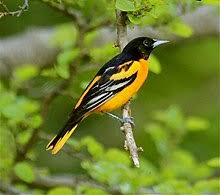
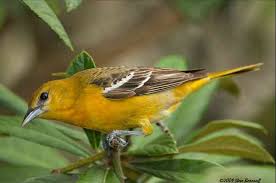
These songbirds stay high in the canopies flitting from branch to branch catching insects. They are, however, easy to attract to the feeder with fruits and jellies. They love oranges! Along with insects, they can’t turn down good nectar in a hummingbird feeder with good access. While searching the treetops for the Baltimore Oriole, you may first be attracted to their sweet call. It’s very distinctive and will draw attention. Further, keep your eye out for their easily recognizable nest hanging from a high branch. The female gets all the credit for weaving together her architectural wonder that hangs like a sock. This feat takes two weeks to complete, providing good weather. The Baltimore Oriole is special, but there are several other beautiful Orioles in the U.S.



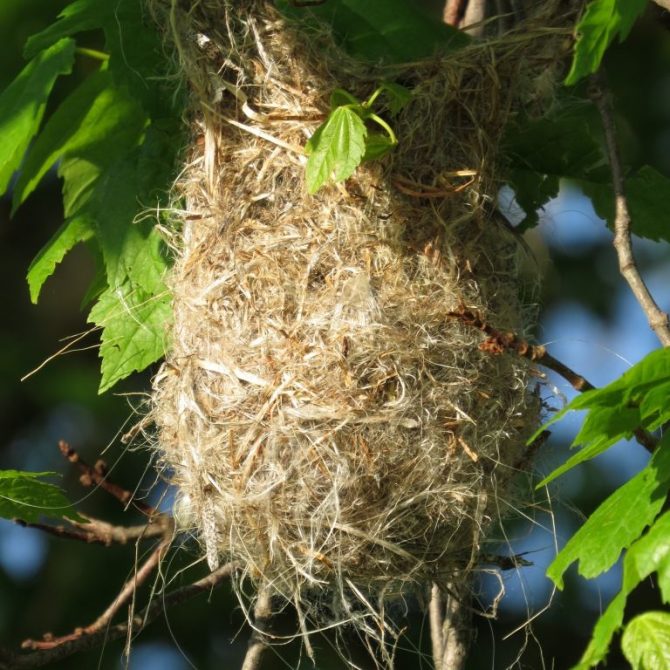
The Orchard Oriole shares the same large territory as the Baltimore Oriole. They’re a smaller songbird with more muted coloring. The male is colored like his Baltimore cousin, but instead of bright orange and black, he’s a rich chestnut brown and black. The female is greenish yellow. The Orchard Oriole is very common, but very hard to see. Like other Orioles, they eat insects and are nectar fanatics. Don’t forget some jelly and oranges at the feeder!
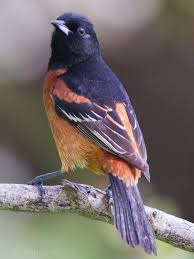
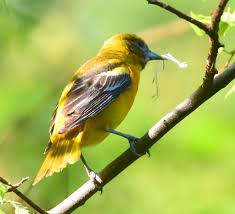
The Bullock’s Oriole was named by William Swainson in 1827 after William Bullock, an English amateur naturalist. Well, not as much fun as Lord Baltimore, but just as beautiful! The male Bullock’s Oriole is flame-orange with black back and wings. He is mostly distinct from the Baltimore cousin by having an orange face with a black stripe running through the eye. No doubt, this guy is beautiful. The female is yellowish gray with a white belly and darker wings. Their range starts where the Baltimore and Orchard’s leaves off. The Bullock’s range covers the Rocky Mountains west through California, and from western Canada down into Mexico.
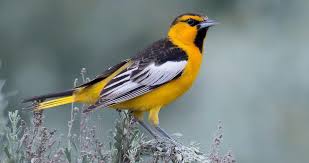
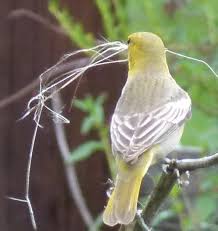
Like all orioles, the Bullock’s Orioles eat insects from the treetops, and like creepers, they can be seen hanging upside down foraging along for food. What brings them down from the treetops? How about nectar, jelly and orange slices. This remains a treat for any oriole, and easy access is a sure way to coax them to your backyard feeder. If you live in the west, you should have this beauty on your list.
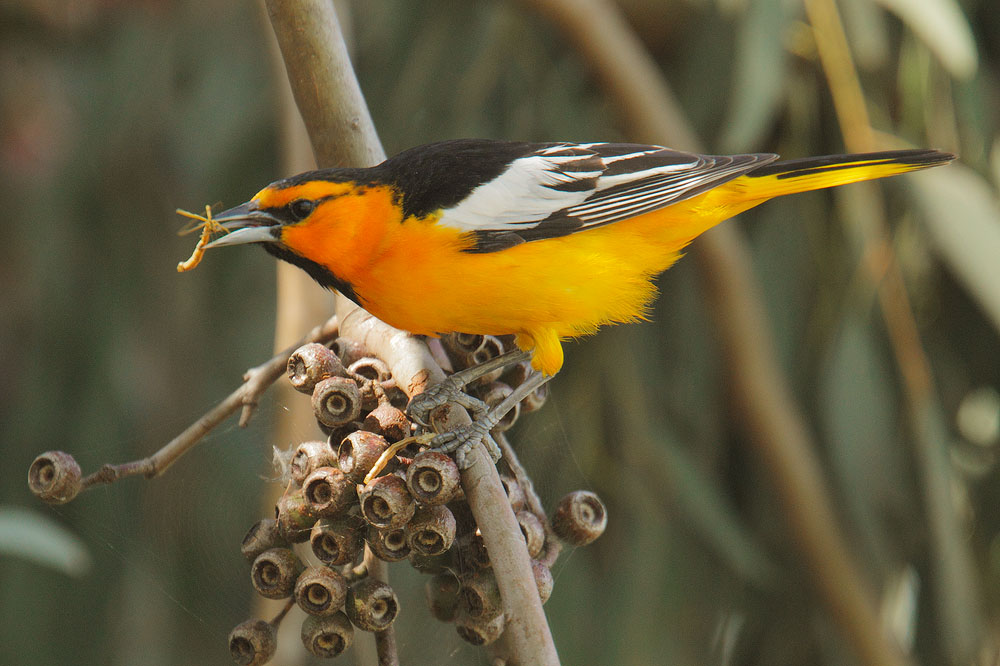
The Hooded Oriole makes the final count of U.S. Orioles. His range is smaller, and runs through southern California and south through the border states into Texas and Mexico. In California the Hooded Oriole is sometimes called the “palm-leaf oriole” because they frequently weave an intricate nest and then “sew” it into a the underside of a palm frond. Again, this male Oriole is nothing but striking to see. He is bright yellow-orange with a black face, wings and tail. The female is light yellow. These birds are insect eaters from high, but love their nectar, fruits and jelly in the backyard. Bright as the Hooded Orioles are, they are very difficult to see. Keep your binocs handy!
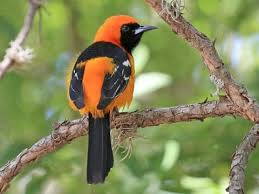

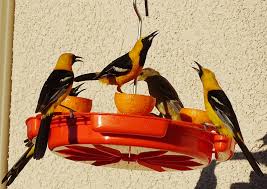
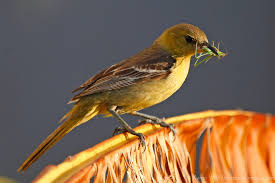
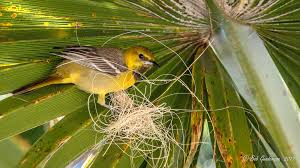
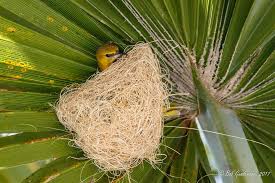
All of the Orioles are in the blackbird family, all share similar diets, all flitter from the very tops of trees, all build remarkable nests, all have clear and sweet songs, and all are among the most beautiful birds in America! It’s all about the beautiful Orioles!
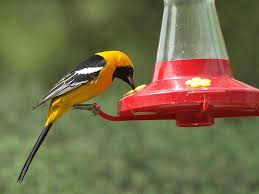
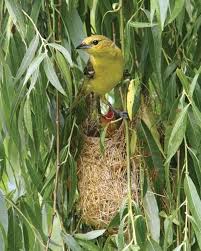
The Scott’s Oriole of the semi-arid zones of the Southwestern US and Mexico is closely associated with yucca. It forages for insects on yucca plants, eats nectar from yucca flowers, weaves its nest from fibers taken from dead yucca leaves, and hangs the nest from live yucca leaves. The yucca provides almost everything for the Scott’s Oriole! Scott’s Orioles are relatively easy to find. Males begin singing well before sunrise and sing frequently during the day, even when foraging and during the nonbreeding season. When foraging, Scott’s Orioles do spend time “buried” in yucca plants and other desert and mountain vegetation, but their bright plumage tends to make them easy to spot when they come up for air. In mountain woodlands, they may forage with warblers, vireos, woodpeckers, and kinglets.

photo by Ben Knoot
